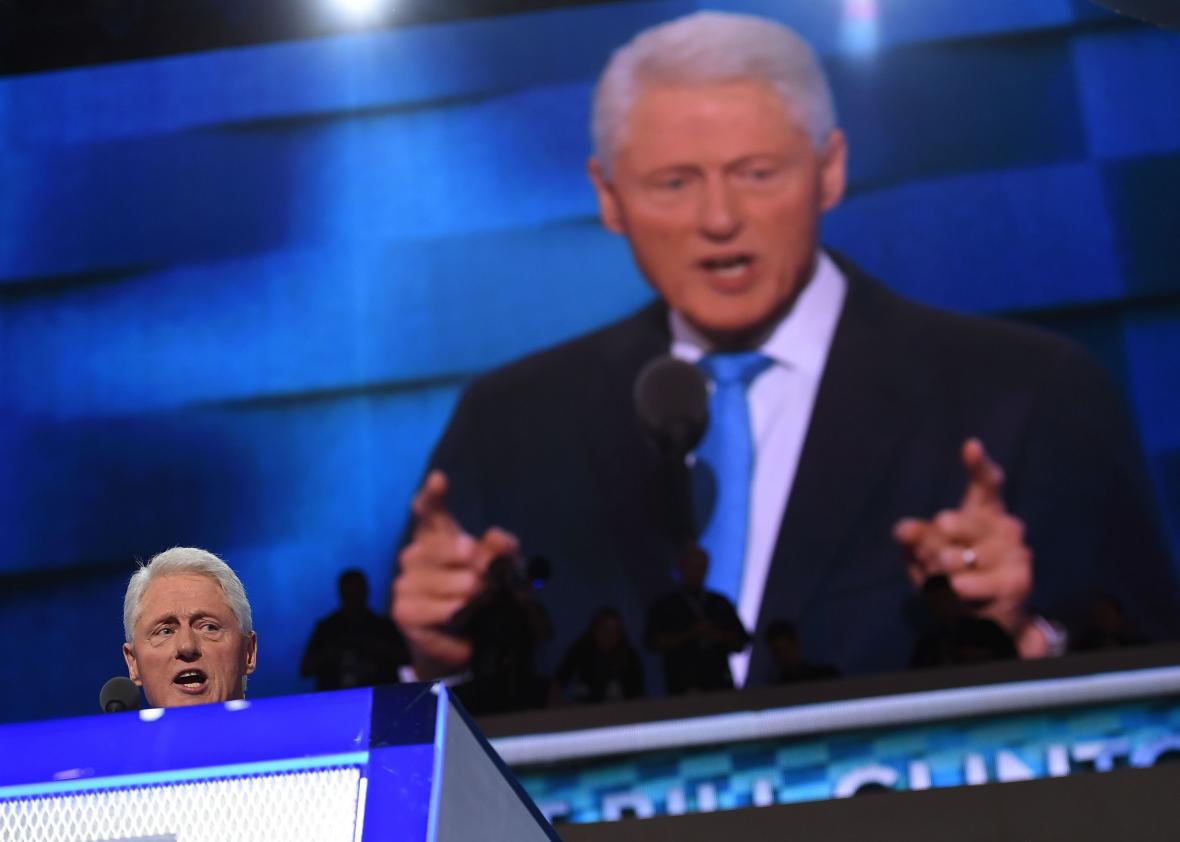On Tuesday night, Hillary Clinton made history when the Democratic delegates in Philadelphia nominated her as the party’s candidate for president. You wouldn’t have guessed that by looking at the front page photos of some of the country’s local and national newspapers:
There are a few interpretations of the popular editorial choice to illustrate the story of Hillary Clinton’s momentous achievement with a photo of Bill. One is that papers were trying to get at both of the evening’s major events: Hillary’s nomination and Bill’s speech. Another is that there simply were no photos of Hillary from Tuesday night; she only appeared in a video near the end of the proceedings and won’t speak live at the convention until Thursday.
Or, as some suggested on Twitter Wednesday morning, it’s straight-up misogyny.
In an election cycle that’s seen Hillary Clinton become the subject of endless misogynist memes and insults that reduce her to the role of Bill’s frigid wife, a conscientious front-page editor (or, in all likelihood, an editorial team dominated by women) would have taken extra care to make sure Hillary’s husband didn’t eclipse news of her big moment at the convention. Any 101 class in journalism ethics covers the politics of photo selection; a historic political moment as gendered as this one would seem to warrant a carefully thought out solution. The papers that paired a headline including only Hillary’s last name with the photo of Bill lose extra points because it’s unclear which Clinton got the nomination.
But can we blame it all on sexism? It’s easy to imagine, in the rush to put together a paper before a tight deadline, editors making an imperfect decision in lieu of other decent options. Newspapers generally don’t use illustrations on the front page, and using an old file photo on an article about a live event—the Los Angeles Daily News’ solution to Tuesday night’s dilemma—undermines the accuracy of the news reporting. Some outlets used a photo of Hillary speaking on the video screen, an unpleasant image with whiffs of Orwell. An argument could be made that those pictures reek of sexism as well, since it plays into the Republican caricature of Hillary as a heartless megalomaniac with ambitions of world domination.
Choosing a photo of Bill, Tuesday night’s big speaker, is not, as Buzzfeed’s Anne Helen Petersen claims, “akin to putting the loser of the Super Bowl on the front page.” (That analogy does hold true for those papers that inexplicably slapped Bernie Sanders under their Hillary headlines, including the Huntsville Times and one edition of the Wall Street Journal.) The choice of Bill seems even less of a sexist outrage when considering how papers illustrated the night of Donald Trump’s convention win. The Wall Street Journal, the Boston Herald, Newsday, and several other outlets chose a photo of Trump’s children, perhaps because Donald Jr. spoke and Donald Sr. didn’t, or because it was a great wire photo and everyone’s sick of the same images of the same two presidential candidates.
Meanwhile the Cleveland Plain Dealer and the Boston Globe chose front-page images of elated Trump fans for the morning after his nomination. This would have been the best way to treat the Hillary’s nomination on the night of Bill’s speech. USA Today and the New York Times both used wonderful photos of women celebrating the big moment, getting at the historic import of the news without compromising accuracy, clarity, or aesthetic integrity.
Online news outlets have a bit more leeway when it comes to choosing homepage photos; since there’s no late-night deadline for a print edition, editors can create multiple front pages nodding to several different events and switch them out every few hours. That’s what Buzzfeed and Slate did, though it didn’t insulate the former from accusations of sexism over its foregrounding of Bill on the homepage under a regrettable headline pun.
But the outrage over Bill’s image on Hillary’s news has been focused on dead-tree outlets. To see such strong opinions and prolonged conversation over newspaper pages in 2016 is oddly comforting in a presidential campaign largely waged in Twitter insults from the right.
